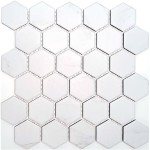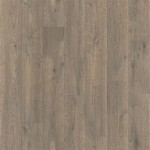Laminate flooring is a popular and affordable choice for many homeowners. It’s easy to install, versatile, and comes in a range of styles and colors. But one issue that can arise with laminate flooring is gaps. Gaps in laminate flooring can be caused by a number of factors, and can range from minor to severe.
What Causes Gaps In Laminate Flooring?
Gaps in laminate flooring can be caused by a variety of issues. One of the most common causes is temperature and humidity. Laminate flooring is made of a combination of compressed fibers and plastic, which can expand and contract depending on the temperature and humidity of the room. This can cause gaps to form between the boards.
In addition to temperature and humidity, gaps can be caused by improper installation. If the laminate flooring isn’t installed correctly, it can cause the boards to shift and create gaps. Other factors, such as furniture, pets, and heavy foot traffic, can also cause gaps in laminate flooring.
How To Fix Gaps In Laminate Flooring
In most cases, gaps in laminate flooring can be fixed without replacing the entire floor. The best way to fix the gaps is to use a floor gap filler. Floor gap fillers come in a variety of colors and textures, so you can choose one that matches your laminate flooring. They’re easy to apply, and can help fill in the gaps and make your floor look new again.
If the gaps are severe, you may need to replace the boards or sections of the floor. This is a more involved process, but it can help get rid of the gaps and make your floor look new again. Be sure to follow the manufacturer’s instructions when replacing the boards or sections, in order to ensure the best results.
Preventing Gaps In Laminate Flooring
The best way to prevent gaps in laminate flooring is to make sure it’s installed correctly. Make sure the boards are laid down properly and that the floor is level. Also, be mindful of the temperature and humidity in the room. If the humidity is too high or the temperature is too low, it can cause the boards to expand and contract, which can lead to gaps.
You should also be mindful of furniture and heavy foot traffic. Moving furniture or heavy items across the floor can cause the boards to shift, which can lead to gaps. Try to keep furniture and heavy items off the floor as much as possible, and use protective mats or rugs to keep them from shifting.
Conclusion
Gaps in laminate flooring can be caused by a variety of factors, including temperature and humidity, improper installation, furniture, pets, and heavy foot traffic. In most cases, the gaps can be easily fixed with a floor gap filler. However, if the gaps are severe, you may need to replace the boards or sections of the floor. The best way to prevent gaps is to make sure the floor is installed correctly, and be mindful of the temperature and humidity in the room. Additionally, try to keep furniture and heavy items off the floor as much as possible.














Related Posts









